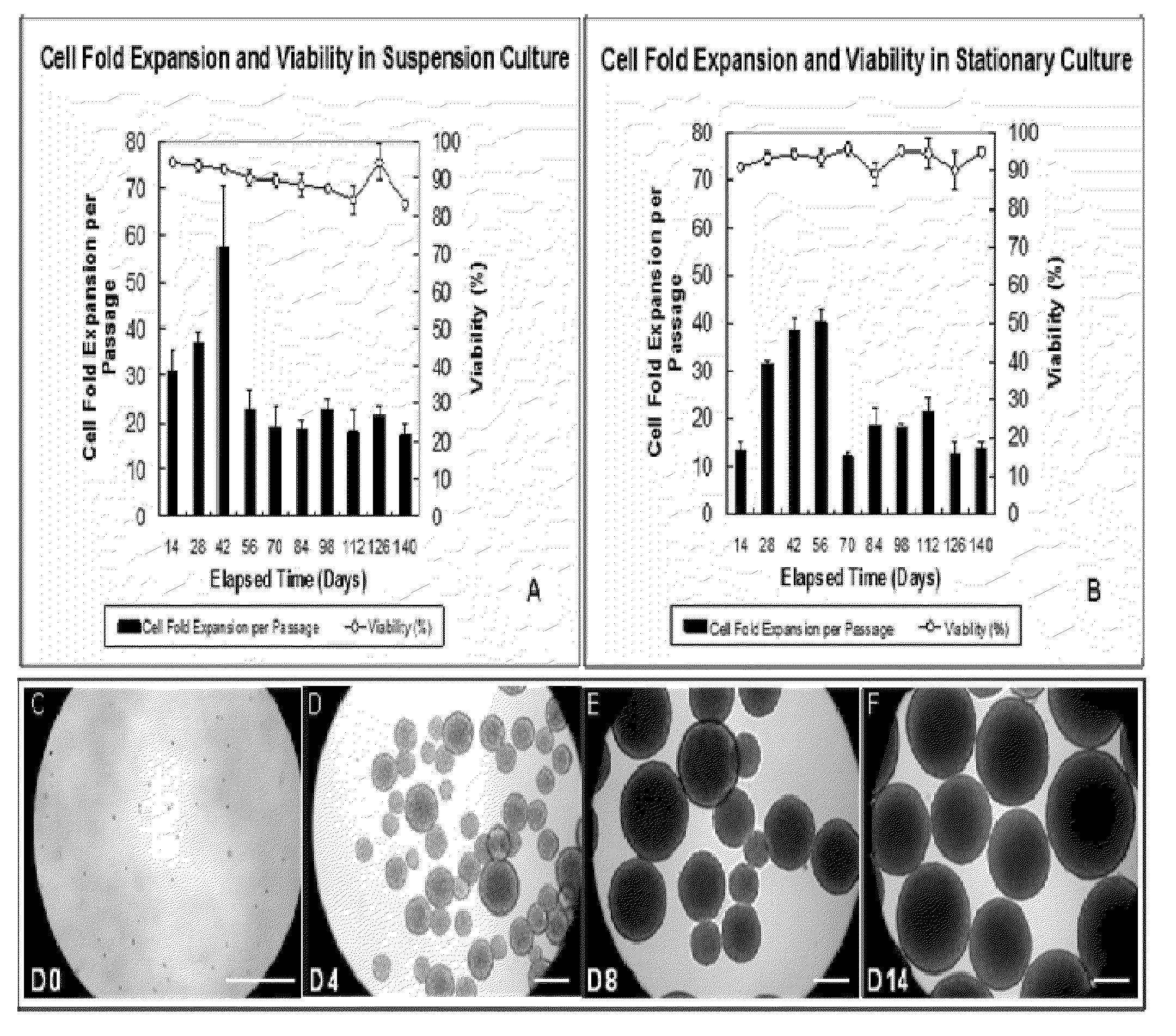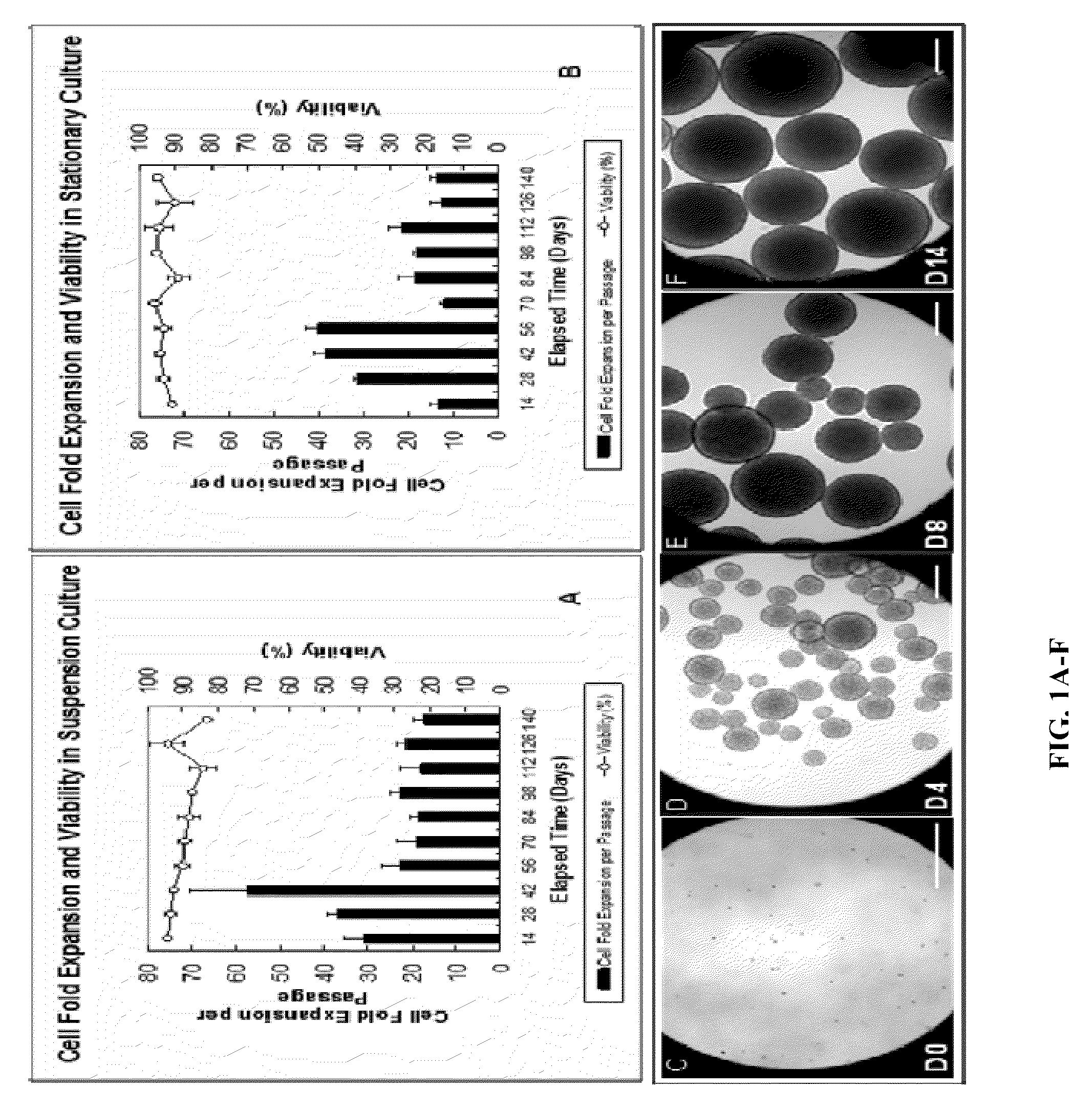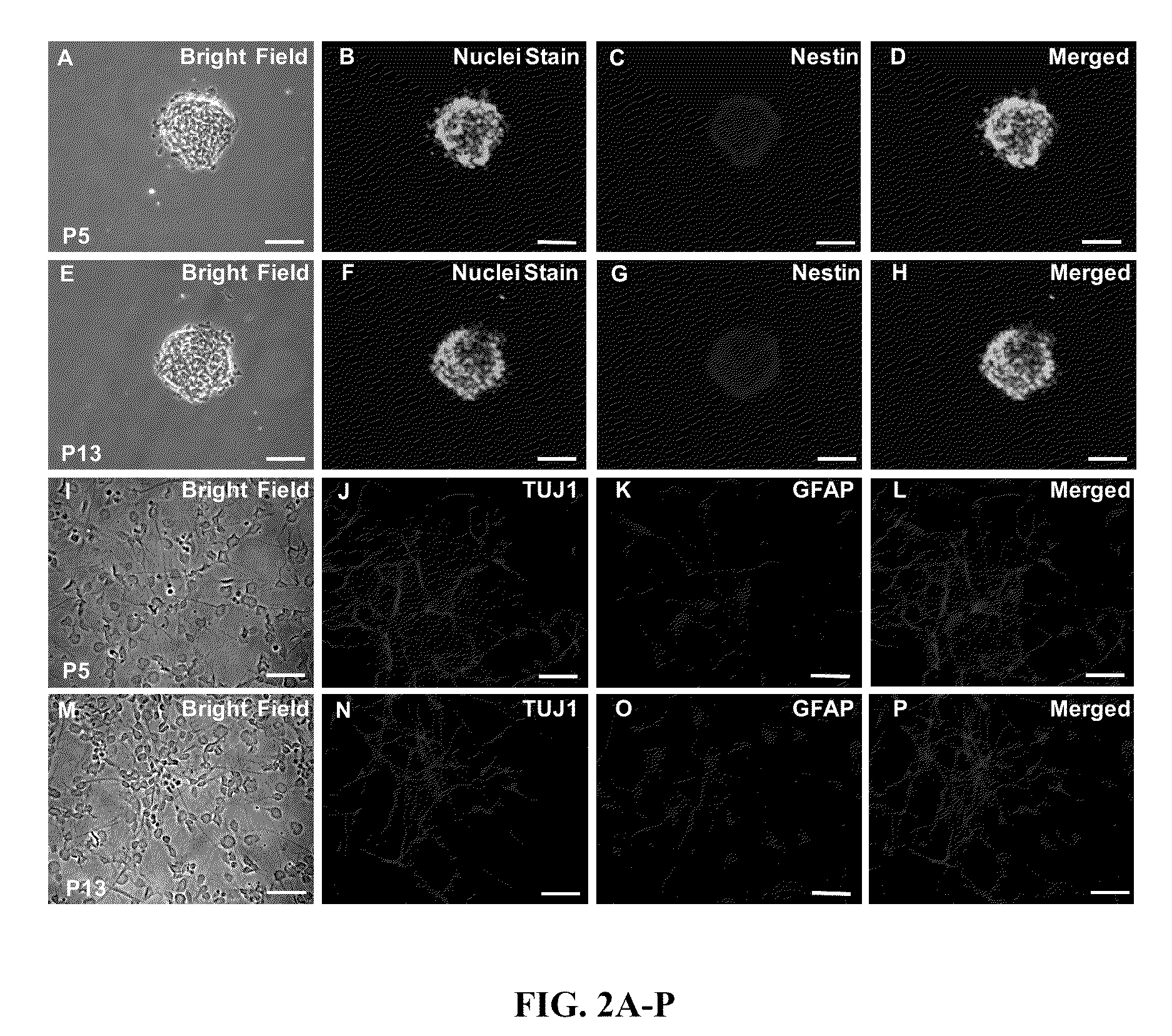Methods and Compositions for Culturing of neural Precursor Cells
a precursor cell and composition technology, applied in the field of neuronal biology, cell biology, stem cell bioengineering, can solve the problems of limiting the clinical utility of this treatment approach, undesirable side effects, and not replacing lost cells by medical therapies
- Summary
- Abstract
- Description
- Claims
- Application Information
AI Technical Summary
Problems solved by technology
Method used
Image
Examples
example 1
Development of PPRF-h2 Serum-Free Growth Medium
[0127]PPRF-h2 is a serum-free growth medium that has been modified from PPRF-m4 medium originally developed for the expansion of murine neural precursor cells (NPCs). PPRF-h2 is prepared by adding different cytokines including recombinant human epidermal growth factor (EGF), recombinant human basic fibroblast growth factor (bFGF), and recombinant human leukemia inhibitory factor (hLIF) and other growth supplements to a mixture of commercially available basal media and nutrients (DMEM / F12).
[0128]All components of PPRF-h2 growth medium are non-animal derived components except for heparin, albumin, and insulin. The heparin used in the PPRF-h2 medium is derived from porcine intestinal mucosa, and already has Food and Drug Administration (FDA) approval for use in clinical applications (e.g., injectable anticoagulant for treatment of thrombosis) (De Caterina et al., 2007). Albumin can be human or bovine serum albumin, and in particular contai...
example 2
Controlling the Size of hNPC Aggregates Below a Critical Threshold
[0136]Human NPCs grow in the form of aggregates of cells called neurospheres in serum-free growth medium, and the size of an aggregate increases over time in culture. Extremely large aggregates develop necrotic cores due to diffusional limitations which prevent adequate quantities of essential nutrients and / or oxygen from reaching the cells at the centre. The inventors have shown that aggregate size can be controlled using liquid shear in suspension bioreactors. The following describes how the aggregate size control has been achieved.
[0137]In suspension bioreactors, hNPCs within the culture are maintained in suspension by agitating a rotating magnetic impeller. Whereas this provides well-mixed, homogeneous conditions within the vessel, the cells grown in these bioreactors are subjected to shear stress created by the movement of the growth medium. Agitation results in the production of fluid vortices, called eddies. Ed...
example 3
Maintaining Oxygen Transfer Rates Above the Minimum Levels Required to Support hNPC Expansion
[0143]Maintaining oxygen transfer rates at acceptable levels in suspension bioreactors is crucial to achieve a successful cell production system. One problem which needs addressing is the low solubility of oxygen (0.22 mM at 37° C. in an air-saturated aqueous solution). Surface aeration (gas diffusion through the culture surface) and sparging (direct aeration within the growth medium) are the most common methods of supplying oxygen to the cells grown in culture. Due to simplicity, surface aeration is often the method of choice to meet the oxygen demand for cultures of less than one liter in volume (Butler, 2004). The inventors have also used surface aeration to maintain the oxygen transfer rate (OTR) in suspension culture at acceptable level. The studies described below have been performed to ensure that surface aeration is capable of achieving this goal.
[0144]To avoid oxygen depletion in th...
PUM
| Property | Measurement | Unit |
|---|---|---|
| diameter | aaaaa | aaaaa |
| diameter | aaaaa | aaaaa |
| volume | aaaaa | aaaaa |
Abstract
Description
Claims
Application Information
 Login to View More
Login to View More - R&D
- Intellectual Property
- Life Sciences
- Materials
- Tech Scout
- Unparalleled Data Quality
- Higher Quality Content
- 60% Fewer Hallucinations
Browse by: Latest US Patents, China's latest patents, Technical Efficacy Thesaurus, Application Domain, Technology Topic, Popular Technical Reports.
© 2025 PatSnap. All rights reserved.Legal|Privacy policy|Modern Slavery Act Transparency Statement|Sitemap|About US| Contact US: help@patsnap.com



